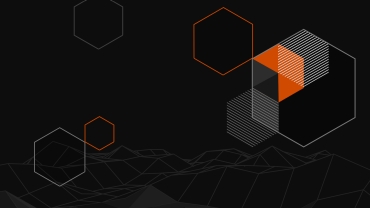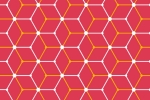
In most simple terms NFTs are unique digital assets stored on a blockchain, a form of digital ledger, that can be sold and traded. Types of NFTs may range from photos, videos, and audio.
In many ways, 2021 was the year of NFTs. It was an unprecedented ascent that gave creators the ability to monetize their work easily and provided collectors with an efficient way to purchase. While NFTs seem to arrive out of nowhere, the concept of NFTs were first introduced back in 2012, when Meni Rosenfeld released a paper describing ‘Colored Coins’. ‘Colored Coins’ introduces methods for proving ownership, managing and representing real-world assets on the Bitcoin blockchain. The first ever known NFT is ‘Quantum’ by Kevin McCoy minted on May 2014, ‘Quantum’ and sold for US$1.4mn on November 2021.
Pioneer NFT projects played an important role in the development of the NFT ecosystem. Artblocks is a generative art type of NFT project, which generates original digital artwork pieces making use of an algorithm. Any research on NFTs would be left empty without mentioning the renowned ‘Crypto Punks’ generated by Larva Labs. ‘Crypto Punks’ were one of the initial ‘Profile Picture’(PFP) type of NFT projects, which can be used as profile pictures on social media or in games.
Today, creators are the main drivers of the NFT space. Every work of artists such as Pak and Beeple receives widespread attention. Prices more than justify popularity. Beeple’s NFT artwork 'First 5000 days’, which sold for $69 million at world famous auction house Christie’s, is just one of many examples.
On many platforms the new aesthetics of NFTs as a form of art has been discussed intensely and NFT artworks have been criticized. Artist Manuel Rossner described NFTs as follows: ‘‘NFTs are to the web what normed containers are to physical logistics, plus all the digital advantages. The potential shift in power away from platform monopolies is why I’m all excited about NFTs and the blockchain.’’ Everybody agrees that minting a digital file in the form of an NFT does not make it an artwork, but good NFT artworks also exist.
Ethereum blockchain leads the NFT market, however increasing NFT activity is seen on other blockchains such as Solana and Tezos, partly due to high Ethereum transaction fees.
Since early 2021, the market has grown exponentially in one year, from $100mn in 2020, to $2bn in the first half of 2021 and then to $22bn in the first nine months of 2021.
The NFT markets were small at first in comparison to the traditional art markets which totalled approximately $50bn in 2020 (down from $64bn in 2019), but the growth was extraordinary. NFT markets not only shifted supply from the traditional art markets but also created their own supply and demand, generating some revenue from the broader entertainment markets such as the gaming industry, which totals $175bn dollars. The shift of supply and demand from traditional art markets to NFT markets was marginal compared to the expansion of the market itself.
The NFT hype may pass, but the technology behind them is incredible. The fact that artist royalty rights can be included in the smart contracts of an NFT is on its own a game changing development.
Understanding the technology and its potential implementations in the arts, the entertainment industry and the broader business world is very critical.
NFTs are game changers for creative content, art and how intellectual property is handled. Just as cryptocurrencies disrupt traditional finance by reducing the need for intermediaries, NFTs have the potential to shift the balance from intermediaries to creators.
Conclusion
NFT market showed significant growth in 2021. The public around the globe familiarized itself with Blockchain technology, thanks to NFTs. The percentage of people owning crypto wallets increased, leading to an increase in transaction volumes at crypto exchanges also.
Overall 2021 became a year to remember following 2020, when we initially faced Covid-19 pandemic, and relied more on technology during the lockdowns. Pandemic certainly caused NFTs use cases to expand in 2021. Sale of NFT collectibles and artworks remain to be the drivers of this technology, but NFTs offer much more use cases such as shared ownership of physical assets, certification services of physical assets such as art or land.
There is a lot to research and improve around the energy consumption of blockchain and the environmental issues it causes. The regulations need to catch up with this developing technology as well.
Following the NFT hype, metaverse, which is an element of Web3, became the most searched word in the last quarter of 2021. This was caused by the listing of Roblox in March 2021 followed by Facebook changing its group name to Meta on 28 October.
Web2's shift from desktop computing to mobile computing, from local to cloud, took approximately 15 years. Web3 and metaverse are deemed as not revolution but evolution and it may take another 10 years for the Web3 and its elements like metaverse to develop and be a part of our lives. It is expected that the industry trends will shift. Web3 will be more local, more niche and targeted, increasingly decentralized (possible breakdown of mobile operating system/app store distribution model over next 5-10 years), more flexible on payment mechanisms.
Digital transformation and adopting to the new technologies are critical for individuals, for companies, for public and for states, PwC is ready to help its clients and the society to invent, to adopt, to understand the developments, to lead the world for a better future.
Disclaimer
This content is for general information purposes only and should not be used as a substitute for consultation with professional advisors. Any disclaimers of warranties specified within the attributed materials also apply to this work.
© 2022 PwC Turkey. All rights reserved. PwC refers to the Turkey member firm, and may sometimes refer to the PwC network. Each member firm is a separate legal entity. Please see www.pwc.com/structure for further details.
The data analysis at, “Deep Dive into NFT Market Transactions", is derived from the dataset "Ethereum NFTs" found on Kaggle.com (Link: https://www.kaggle.com/simiotic/ethereum-nfts, Sophia Arakelyan <i>et al.</i>, “Ethereum NFTs.” Kaggle, 2021, doi: 10.34740/KAGGLE/DSV/2698517.), used under Creative Commons License CC BY 4.0. (License attribution: https://creativecommons.org/licenses/by/4.0/)
2022-0044










